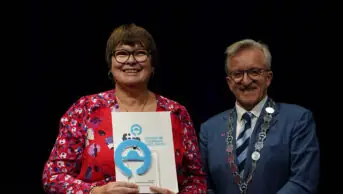The views expressed in this letter are those of the author’s. If you would like to submit a letter to The Pharmaceutical Journal, please click here.
Clinical pharmacists historically employ medicines reconciliation (MR) as a method for reviewing patients on admission to hospital. Increasing hospital throughput combined with polypharmacy mean that the resources do not exist to carry out this process for every admission in the emergency department (ED).
Northern Ireland Clinical Pharmacy Standards and the National Institute for Health and Care Excellence recommend that every patient should receive a MR within 24 hours of admission to hospital[1,2]. With an ageing population and a rise in polypharmacy, confirming pre-admission medicines is a time-consuming process. ED pharmacists often find themselves reviewing non-critical pre-admission medication that is unlikely to acutely benefit the patient in the ED. This time could be better spent focusing on acute issues, such as the timing of critical medicines for conditions like Parkinson’s disease or verifying the dosage schedule for high-risk medicines such as warfarin and insulin.
With the NHS facing financial and staffing challenges, it is imperative that pharmacist expertise is used efficiently[3]. One could argue this is not the case in acute high-risk areas such as the ED, with current practices focusing on the traditional MR model.
The need for an alternative review method to improve patient safety and maximise pharmacist impact had previously prompted the local adoption of a clinical pharmacy triage tool (CPTT) to prioritise patients for review (via red/amber/green status), using the traditional MR process[4].
Study design
This two-part interventional study, carried out in the South Eastern Health and Social Care Trust, Northern Ireland, aimed to develop and evaluate a rapid pharmacist review against current practice. Primary outcomes were the development of a rapid pharmacist review and the number of patients who received pharmacist input.
Secondary outcomes were the number of interventions made, the number of significant interventions made (Eadon score of 4 or above), and de-escalation of CPTT grading[5].
Method
The rapid pharmacist review focused on targeting the reason why a patient had been triaged as red (high-risk) and ensuring that the medication/condition had been prescribed/managed correctly. This came from the observation that many patients who are initially triaged as red via the CPTT could be de-escalated to amber once their main pharmaceutical issue(s) has been reviewed and resolved (e.g. verification of their anticoagulant regime).
The remainder of the medication chart was then screened for clinical and legal appropriateness, combined with inspection of online GP records (to ensure any critical medicines had not been missed), admission bloods and vital observations. This approach differs to the traditional MR process as it takes away the need for a second source to confirm each individual pre-admission medicine, saving time.
Results
Compared with the usual process of MR, the rapid pharmacist review method enabled more patients to receive pharmacist input across the same time period (37 vs 72; [95% CI, 2.65 to 7.35]; P=0.003), resulting in more pharmacist interventions (75 vs 105; [95% CI, 0.9 to 7.7]; P=0.017), more significant interventions (score of 4 or more on the Eadon scale) (46 vs 59) [95% CI, -42.355 to 49.755]; P=0.835) and allowing more patients to have their pharmaceutical triage status de-escalated from red to amber because of pharmacist input (18 vs 33 [95% CI, 0.75 to 3.53] P=0.006).
Conclusion
The rapid pharmacist review model enabled more patients to receive pharmacist input in the ED compared with the traditional MR process. This increased the scope for interventions regarding high-risk/critical medicines. Rosenthal et al. outlined about the culture of pharmacy being one that is risk averse, having a fear of ambiguity and struggling with anything that is “less than textbook perfect”[6]. This demonstrates that now may be the time for pharmacists to review and adapt traditional processes to respond to current challenges and seek new ways to review patients in acute environments.
Caroline Murphy, critical care pharmacist, Belfast City Hospital
- 1Northern Ireland Clinical Pharmacy Standards. . NICPLD. 2013.https://www.nicpld.org/courses/fp/learning/assets/NIClinincalPharmStandards2013.pdf (accessed Sep 2021).
- 2Medicines optimisation: the safe and effective use of medicines to enable the best possible outcomes. NICE guideline [NG5]. . National Institute for Health and Care Excellence. 2015.https://www.nice.org.uk/guidance/ng5 (accessed Sep 2021).
- 3Operational productivity and performance in English NHS acute hospitals: unwarranted variations. Department of Health and Social Care . 2016.https://assets.publishing.service.gov.uk/government/uploads/system/uploads/attachment_data/file/499229/Operational_productivity_A.pdf (accessed Sep 2021).
- 4Development and reliability of a clinical pharmacy triage tool in the emergency department. Pharmaceutical Journal Published Online First: 2021. doi:10.1211/pj.2021.1.76360
- 5Eadon H. Assessing the quality of ward pharmacists’ interventions. International Journal of Pharmacy Practice 1992;1:145–7. doi:10.1111/j.2042-7174.1992.tb00556.x
- 6Rosenthal M, Austin Z, Tsuyuki RT. Are Pharmacists the Ultimate Barrier to Pharmacy Practice Change? Can Pharm J 2010;143:37–42. doi:10.3821/1913-701x-143.1.37


